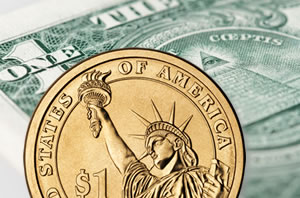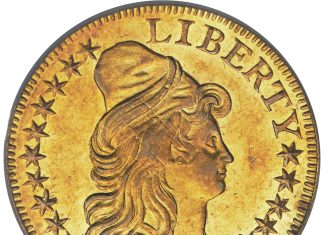
Members of the United States Congress are once again seeking a change to the status quo of the $1 coin. However, unlike other recent attempts to actually end or severely limit production of the coins, this newest piece of legislation would ramp up $1 coin production with the goal to eventually replace the paper dollar bill.
The Currency Optimization, Innovation and National Savings Act, or COINS Act, was introduced in the U.S. House of Representatives as H.R. 2977 on September 20, 2011 by Rep. David Schweikert of Arizona.
Schweikert, a member of the House Financial Services Committee and the Subcommittee on Domestic Monetary Policy, introduced the COINS Act as a means to save the government, and by extension the American people, billions of dollars.
"At a time when we are staring down a record-breaking $1.3 trillion deficit, any commonsense measure that cuts billions needs to be given serious consideration. That is exactly what the COINS Act will do and why I am introducing it," said Representative David Schweikert in a statement released about H.R. 2977.
"Protecting taxpayer dollars has never been more critical. One area where Americans may be surprised to learn we can save money is in our currency. By making this transition from a dollar bill to a dollar coin, the U.S. will save $184 million a year and nearly $6 billion over 30 years."
Act Outlines Steps in Moving from Dollar Bill to $1 Coin
The COINS Act takes a multi-faceted approach in moving away from the dollar bill to $1 coin. Aside from the appropriate reports to Congress on the progress of the plan, several specific steps are outlined in the proposed legislation.
First among them is the sequestering of Susan B. Anthony Dollars from circulation within six months of the enactment of the H.R. 2977. These coins were struck from 1979 to 1981 and again in 1999. The Board of Governors of the Federal Reserve System would essentially impound Susan B. Anthony Dollars to prevent their return to circulation, although the dollars would still be available in bulk quantities at face value to coin dealers and to other countries which have adopted the U.S. dollar as their base currency.

After one year, the Secretary of the Treasury would declare all Susan B. Anthony Dollars obsolete. However, any still in circulation would forever be considered legal tender.
Additional steps would seek to continue the circulation and public acceptance of the remaining $1 coins, the Native American Dollars and the Presidential Dollars. The end goal of which would be to achieve adequate use and supplies of the aforementioned coins to eventually replace the dollar bill.
Federal Reserve $1 Notes would be replaced when one of two following requirements was met:
- 600,000,000 of the $1 coins were placed into circulation annually or, failing that,
- 4 years have passed following the enactment of the COINS Act
At that time, Federal Reserve Banks could not order dollar bill replacements from the Bureau of Engraving and Printing (BEP) but could, for one year, use existing inventories or return to circulation any bills still fit for use. Following the one year period, any $1 notes deposited would then be destroyed. Those still in circulation would still be considered legal tender. There is also a side provision that would enable the BEP to produce dollar bills specifically for collectors.
H.R. 2977 currently has four cosponsors. The legislation has been referred to the House Committee on Financial Services. For the COINS Act to become law, it must pass in both chambers of Congress and win the signature of the President of the United States.





